October - Group Exhibit
![]()
Opening Reception on First Thursday, October 5th, 6-8pm.
Show will be installed between Monday October 2-Wednesday October 4.
Glass is a transformative material: it must be heated and gathered, blown and shaped, cooled and refined. Smooth and clear, rough and opaque, delicate or dense, it changes its form many times as it finds its ideal shape. The legends of the indigenous peoples of the Northwest are similar: they change their properties as they are retold and re-imagined, and we turn them over and over to reveal new facets and truths. What better modern material to use, then, to render the characters and cultures of the Coast than glass?
The Northwest’s hot love affair with glass has been smoldering for 40 years, and only grows in intensity as new artists–particularly Native artists–are drawn to the flame. Seattle has a front row seat to witness and enjoy the creation of a dynamic new art movement: Northwest Native Art Glass. It is the result of the fusion of two of the region’s most significant art genres: Native Art and Studio Glass art. The Stonington Gallery has played an important role in building the bridge between traditional Northwest Coast Native art and studio glass, and fostering the nascent scene.
The first Stonington exhibit to feature Native Art Glass was Southern Style: Contemporary Art of the Coast Salish, Makah and Nuu-chah-nulth in 1990. It featured a glass and cedar spindle whorl by Susan Point (Musqueam) and a glass Orca dorsal fin with suspended spirit figures by Marvin Oliver (Quinault/Isleta Pueblo). This was the first gallery exhibit specifically dedicated to art of the Southern coast, and the first exhibit where glass took center stage.
Oliver was one of the first–if not the first–Northwest Native artist to understand the potential of glass as a medium through which to express iconography of the Northwest Coast by sculpting, casting, fusing and etching. Others were not far behind. At that time, Preston Singletary (Tlingit) had mastered traditional Venetian glassblowing, but was deeply personally inspired to explore his personal artistic Tlingit legacy. Singletary immersed himself in learning the complex and challenging art tradition of 2D and 3D formline design and the stories and mythology behind crest designs. He consulted with the masters of the form, including Oliver, Duane Pasco, Steve Brown, Joe David (Nuu-cha-nulth), Gregg Blomberg and David Svenson. Singletary’s dedication allowed him to emerge in the mid-to-late 1990s as a visionary star of Native Glass Art. His meteoric rise to become one of the genre’s leading voices introduced glass collectors around the world to the nature of Northwest Coast formline and art, and Native art collectors to the potential of glass.
Singletary is often asked why he combines the medium of glass with Northwest Coast art, as if it were an uneasy or unorthodox pairing. He points out that glass has been on the Coast since Europeans brought glass beads for trading aboard ships. Glass was introduced centuries ago, and has been incorporated in the generations since. As master carver Joe David (Nuu-chah-nulth) has wisely observed, Native artists have always been resourceful; if you show an artist something new, they will be excited about its possibility. It is what adaptable people do; they work with their environment.
Exhibition Dates:
October 1, 2017 - October 29, 2017Involved Artists:
Alano Edzerza, Dan Friday, Lois Chichinoff Thadei, Marvin Oliver, Lillian Pitt, Susan Point, Preston Singletary, Raven Skyriver
Featured Works
-
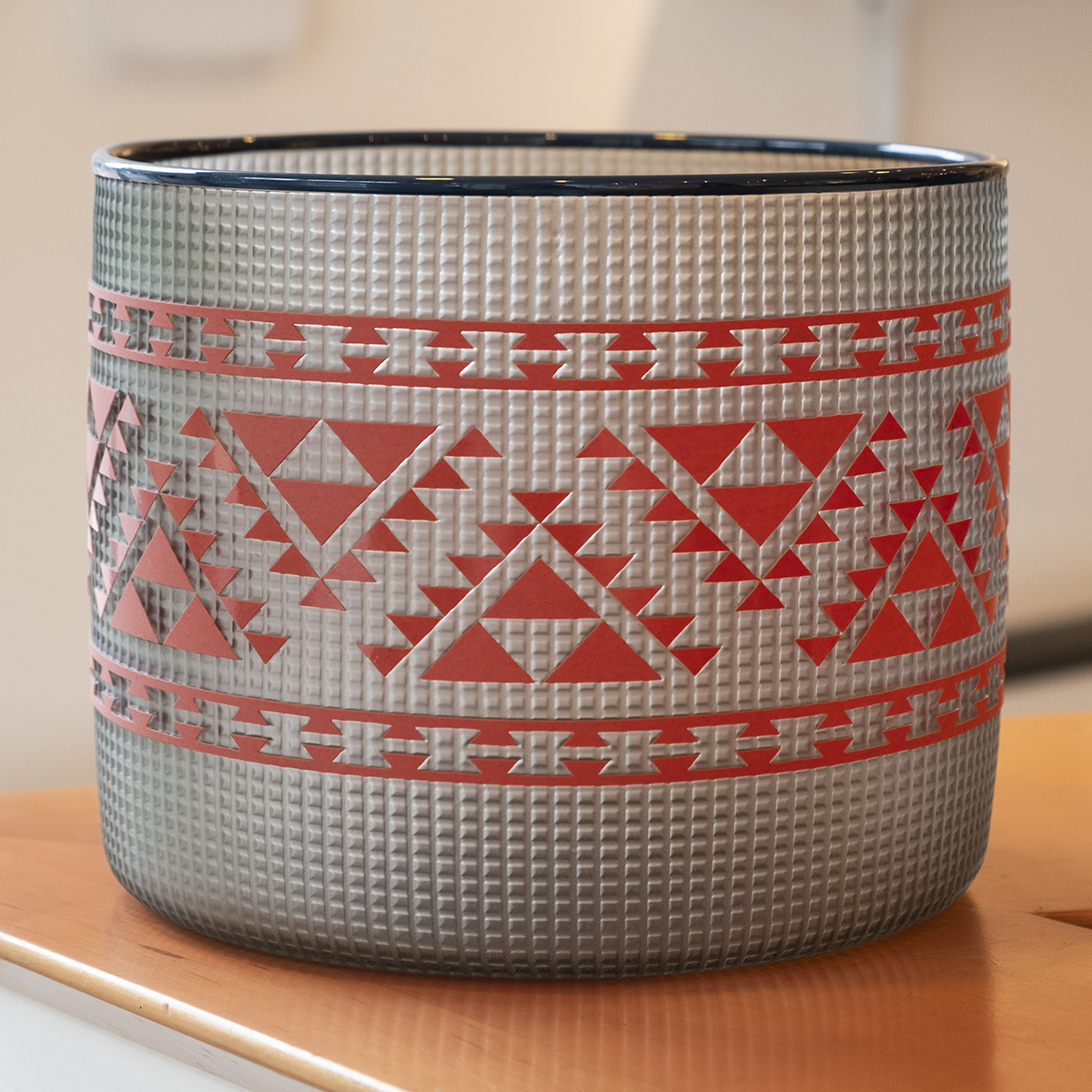 Preston SingletarySmoke Tlingit Glass Basket with Blue LipBlown and Sandblasted Glass
Preston SingletarySmoke Tlingit Glass Basket with Blue LipBlown and Sandblasted Glass- 8"h
- 9.5"w
- 9.5"d
SOLD -
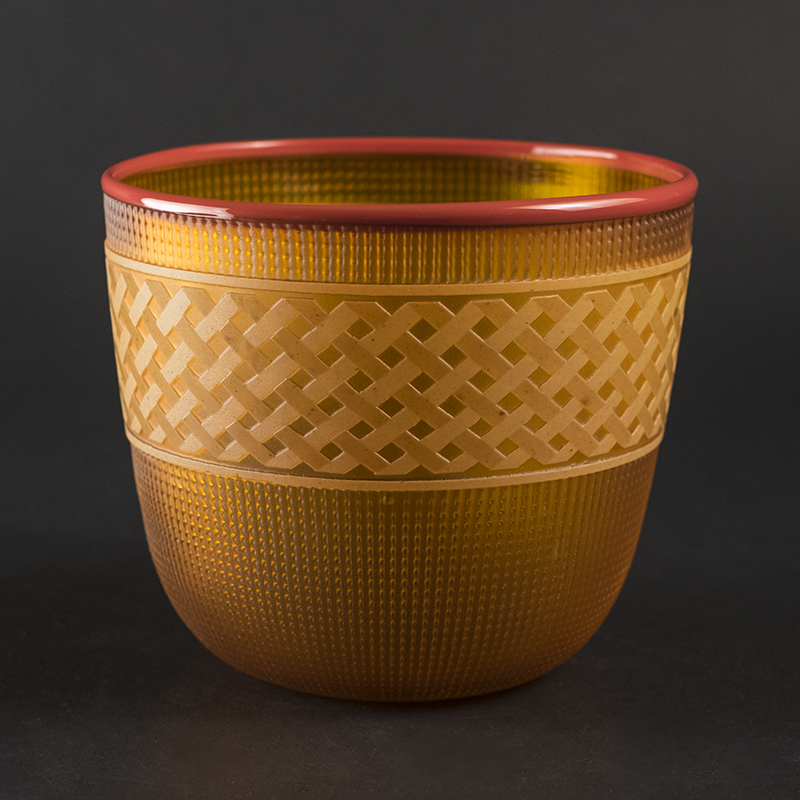 Preston SingletaryAmber Glass Berry Basket with Brick Red LipBlown and Sandblasted Glass
Preston SingletaryAmber Glass Berry Basket with Brick Red LipBlown and Sandblasted Glass- 5.5"h
- 6.25"w
- 6.25"d
SOLD -
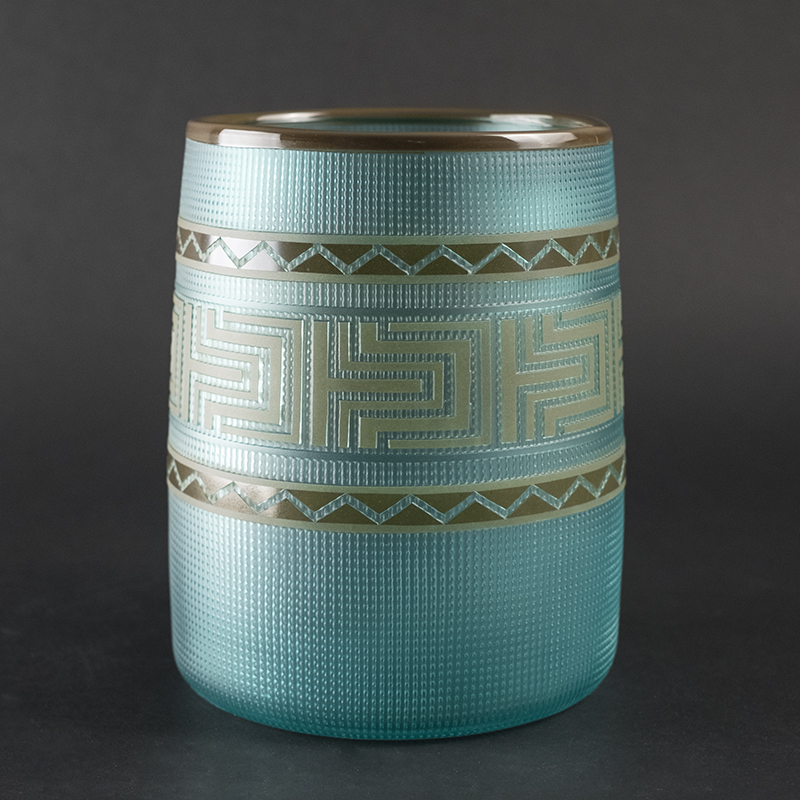 Preston SingletaryAqua Tlingit Glass Basket with Grey LipBlown and Sandblasted Glass
Preston SingletaryAqua Tlingit Glass Basket with Grey LipBlown and Sandblasted Glass- 9"h
- 6.5"w
- 6.5"d
SOLD -
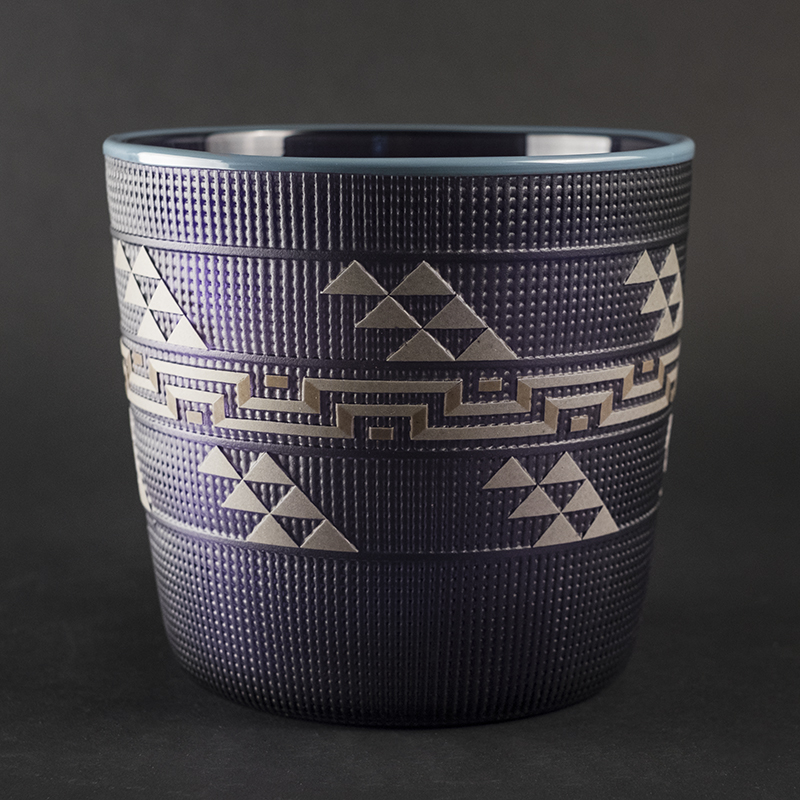 Preston SingletaryDeep Purple Tlingit Glass Basket with Grey LipBlown and Sandblasted Glass
Preston SingletaryDeep Purple Tlingit Glass Basket with Grey LipBlown and Sandblasted Glass- 7.75"h
- 8.25"w
- 8.25"d
SOLD -
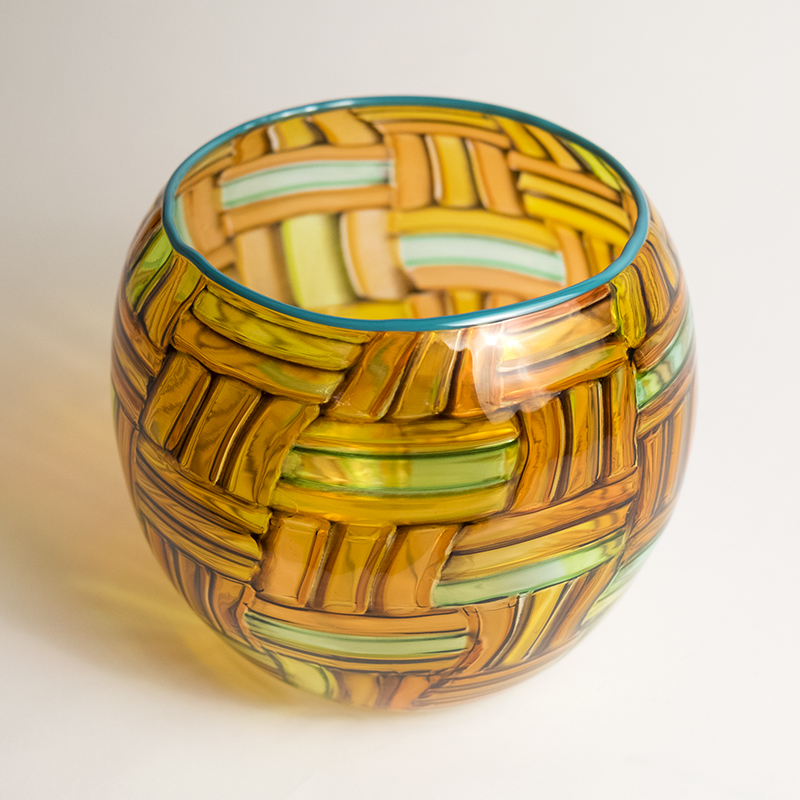 Dan FridayAunt Fran’s Basket (Small)Woven Cane and Tile Glass
Dan FridayAunt Fran’s Basket (Small)Woven Cane and Tile Glass- 8.5"h
- 8.5"w
- 8.5"d
SOLD -
 Dan FridayGlass FeatherHot-sculpted Glass with Pendleton Blanket Scraps and Mountain Goat WoolSOLD
Dan FridayGlass FeatherHot-sculpted Glass with Pendleton Blanket Scraps and Mountain Goat WoolSOLD -
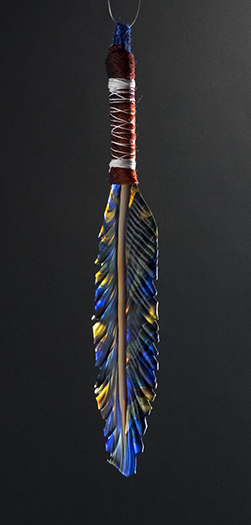 Dan FridayGlass FeatherHot-sculpted Glass with Pendleton Blanket Scraps and Mountain Goat WoolSOLD
Dan FridayGlass FeatherHot-sculpted Glass with Pendleton Blanket Scraps and Mountain Goat WoolSOLD -
 Marvin OliverTransporterBlown, Fused and Cast Glass
Marvin OliverTransporterBlown, Fused and Cast Glass- 46"h
- 24"w
- 18"d
SOLD -
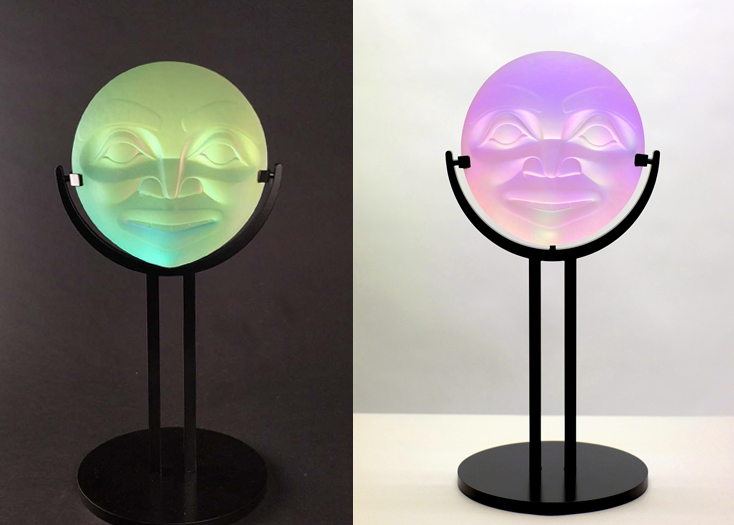 Marvin OliverFrosted Dichroic Moon FaceSandblasted Dichroic Glass on Metal Stand
Marvin OliverFrosted Dichroic Moon FaceSandblasted Dichroic Glass on Metal Stand- 17"h
- 8.5"w
- 8.5"d
SOLD -
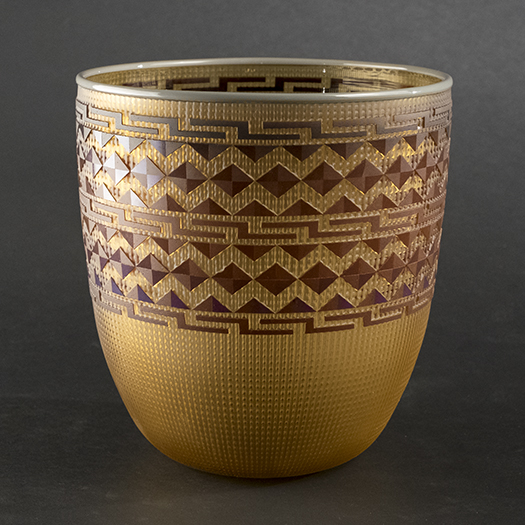 Preston SingletaryTea Tlingit Glass Basket with Gray RimBlown and Sandblasted Glass
Preston SingletaryTea Tlingit Glass Basket with Gray RimBlown and Sandblasted Glass- 9"h
- 8.25"w
- 8.25"d
SOLD -
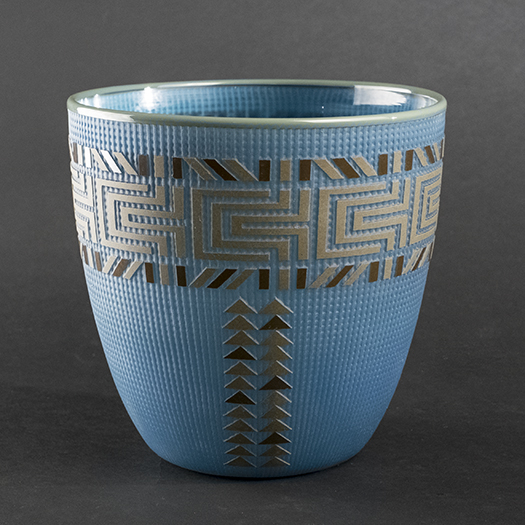 Preston SingletaryBlue Tlingit Glass Basket with Gray RimBlown and Sandblasted Glass
Preston SingletaryBlue Tlingit Glass Basket with Gray RimBlown and Sandblasted Glass- 8.25"h
- 8.5"w
- 8.5"d
SOLD -
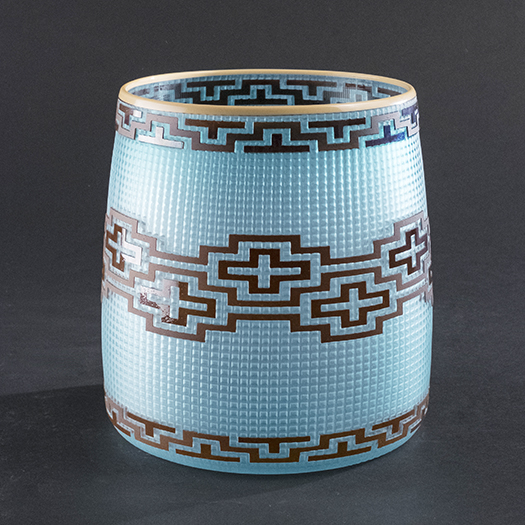 Preston SingletarySky Blue Tlingit Glass Basket with Tan LipBlown & Sandblasted Glass
Preston SingletarySky Blue Tlingit Glass Basket with Tan LipBlown & Sandblasted Glass- 9"h
- 7.5"w
- 7.5"d
SOLD -
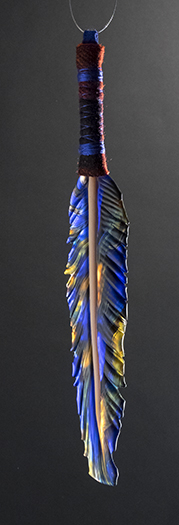 Dan FridayGlass FeatherHot-sculpted Glass with Pendleton Blanket Scraps and Mountain Goat WoolSOLD
Dan FridayGlass FeatherHot-sculpted Glass with Pendleton Blanket Scraps and Mountain Goat WoolSOLD -
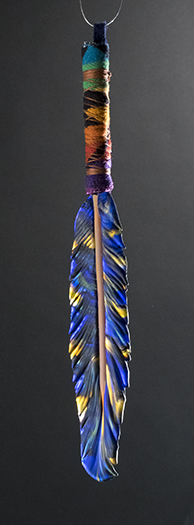 Dan FridayGlass FeatherHot-sculpted Glass with Pendleton Blanket Scraps and Mountain Goat WoolSOLD
Dan FridayGlass FeatherHot-sculpted Glass with Pendleton Blanket Scraps and Mountain Goat WoolSOLD -
 Alano EdzerzaThe Human Transformation Raven Transformation PanelLimited Edition Sandblasted Glass, Red Cedar, Acrylic, Stainless Steel
Alano EdzerzaThe Human Transformation Raven Transformation PanelLimited Edition Sandblasted Glass, Red Cedar, Acrylic, Stainless Steel- 61"h
- 28"w
- 3"d
SOLD -
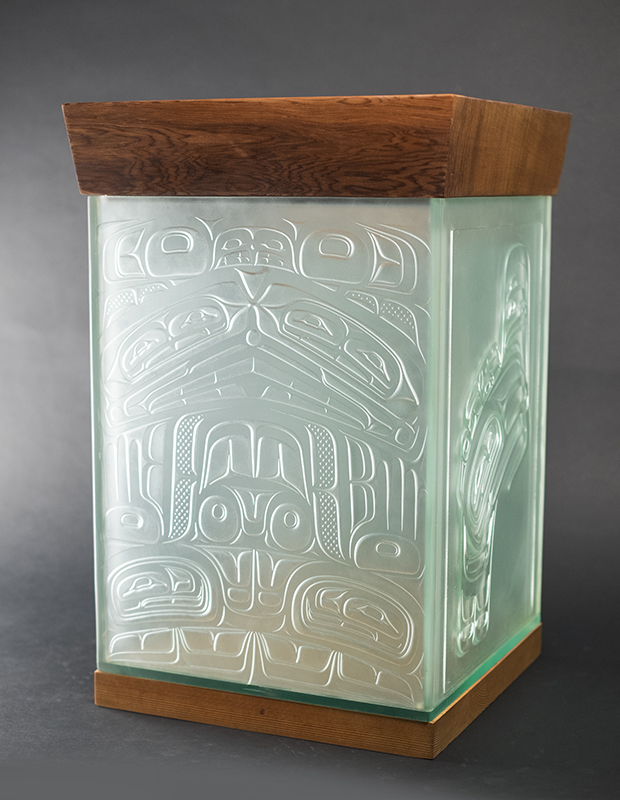 Alano EdzerzaSea Monster BoxSandblasted Glass, Red Cedar
Alano EdzerzaSea Monster BoxSandblasted Glass, Red Cedar- 26"h
- 16.50"w
- 16.50"d
SOLD -
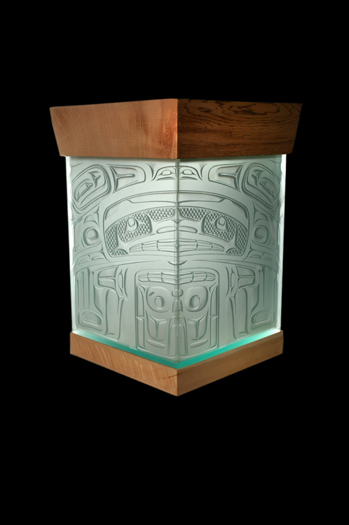 Alano EdzerzaThe House of the Mouse BoxSandblasted Glass, Red Cedar
Alano EdzerzaThe House of the Mouse BoxSandblasted Glass, Red Cedar- 18.5"h
- 13"w
- 13"d
SOLD
